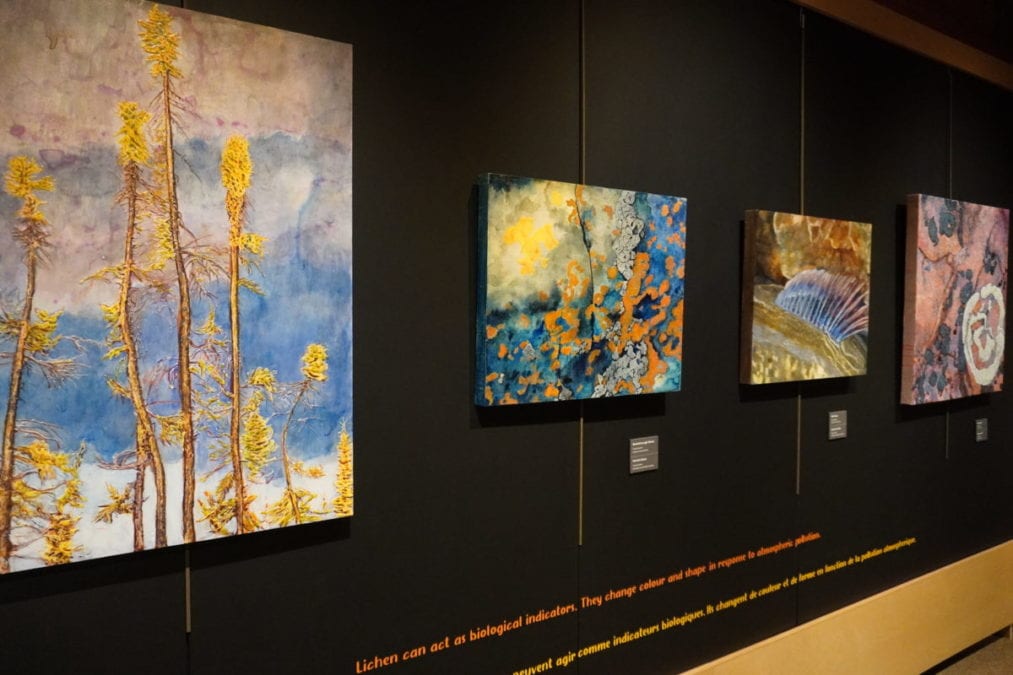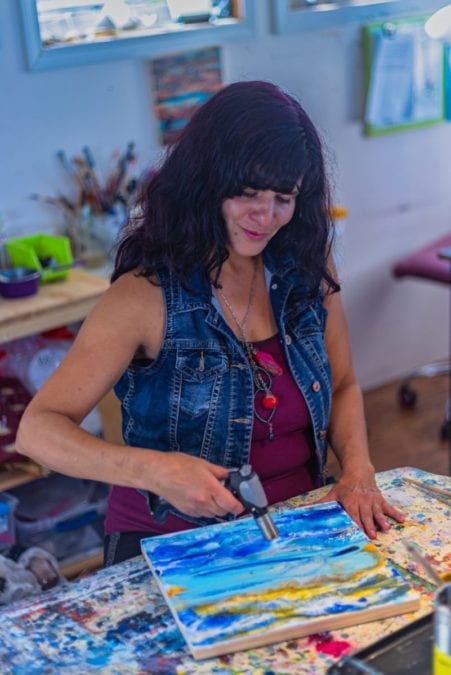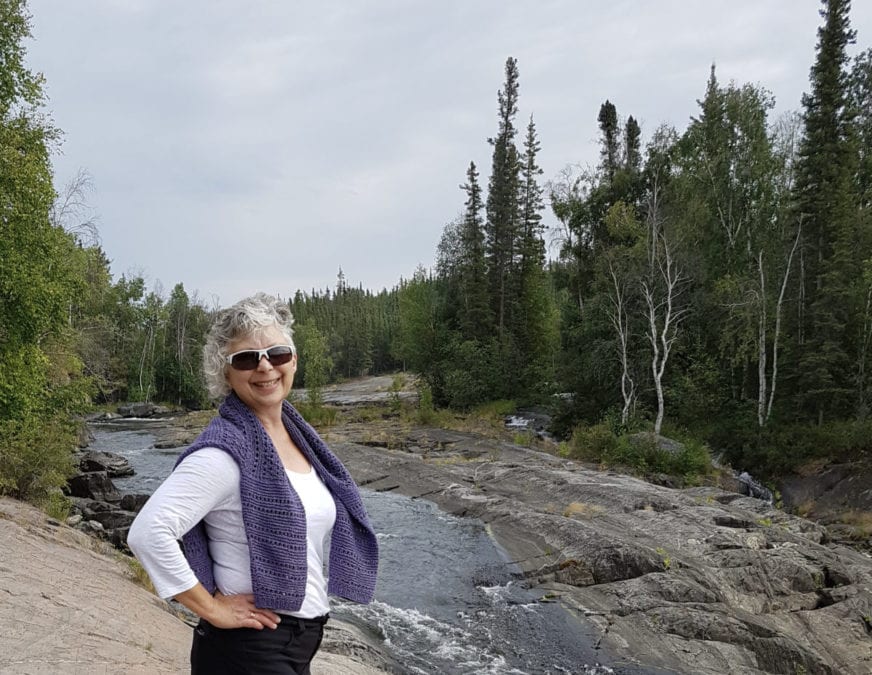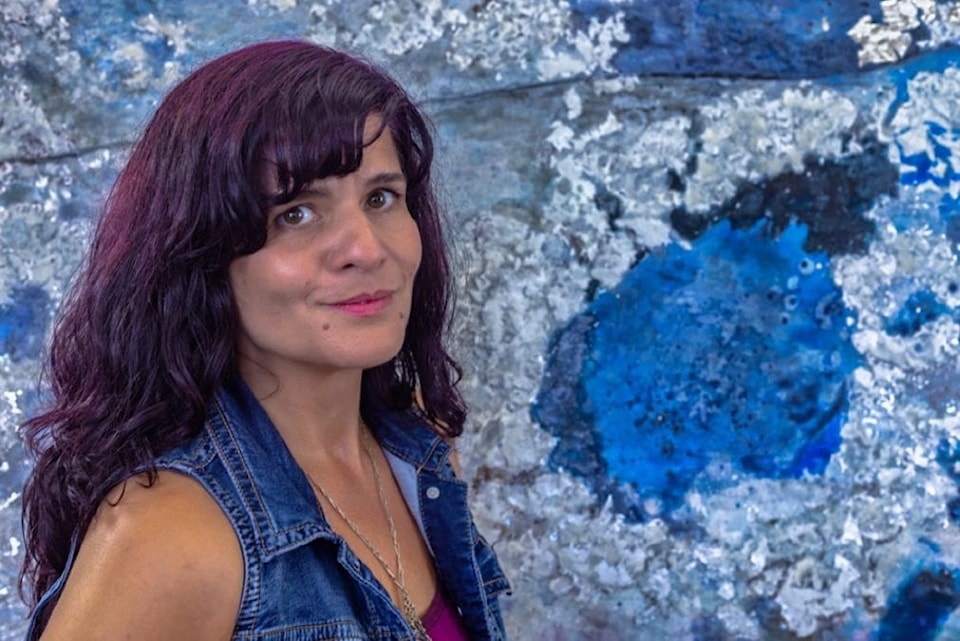Tracey Bryant has always found solace in ���ϳԹ��� landscapes. Not just the sky and the trees, but the minutiae of the patterns and details in the rocks and the earth.
Even as a child, the Yellowknife artist said she would often escape to the bush to calm her worries and examine lichen and other organisms.

Natalie Pressman/���ϳԹ��� photo
In the Prince of Wales ���ϳԹ��� Heritage Centre’s (PWNHC) newest exhibit, Covered Ground, visitors are invited to explore the details of the natural world with the same fascination.

photo courtesy of Tracey Bryant
The exhibit, on display in the museum’s mezzanine until May, pairs Bryant’s pieces in acrylic and encaustic, or wax, with lichen-inspired paper sculptures from Alberta artist Rhona Harder Epp.
“I spent a long time trying to capture feeling of a not just visual but sensory experience,” Bryant said.
She explained the work amplifies that which we regularly encounter but may not notice.
Bryant described the way the “resilient” lichen break down rocks to provide nutrients to the soil and allow other organisms to flourish.
“It’s not just the rocks, it's the relationship to the lichen and the other things that are growing and in greater scheme of life,” she said.
Bryant said the irony is not lost on her that an art show featuring greenery would launch in the dead of winter. She admits she finds the dark winters to be a challenge but she said she pushed herself to find “those little reserves of light.”
In that sense, “Covered Ground” has dual meaning as it represents themes of the physical ground, while providing a grounding experience for viewers.
While Bryant is a seasoned acrylic artist, she recently “fell in love” with the encaustic medium – an art form where coloured beeswax is melted on canvas.
She starts each piece with an idea, however, since encaustic work involves melting wax with a blow torch, it’s difficult to plan precisely where the colours end up. The art is largely a result of “experimenting and play and not being in control and letting go,” she said. “There’s a very therapeutic aspect that reflects my relationship with the (Canadian) shield. It’s very symbolic.”

photo courtesy of Rhonda Harder-Epp
On Jan. 14, Bryant and the PWNHC are hosting an where visitors can hear from the artist and curators to learn more about the exhibit and the story behind its inception. Tours will take place from 5-8 p.m. and last 20 minutes for groups of up to five. Residents can reserve time slots for the free event on the . Attendees are reminded to wear a face mask.
Since Harder Epp is not able to attend the event in person, she will be giving a virtual talk of her own on Jan. 21. At that time, she will discuss how she came to create her white paper sculptures, despite her usual set of work being mostly paintings.
"I'm not actually against colour," she joked. The same work in colour just didn't have the same effect. It seemed to override the purpose."
With Bryant’s use of bright colours, Harder Epp said “the pairing is fabulous.”
In his curatorial statement at the museum, Scott Marsden wrote that both artists "have done a remarkable job of revealing a hidden world full of natural variations and a shared and symbiotic relationship between colour, repetition and forms found on the landscape of the NWT."
While lichens "can be understated" and "might be missed at first glace," he said both Bryant and Harder Epp shed light on the organism's "quiet exquisiteness."



